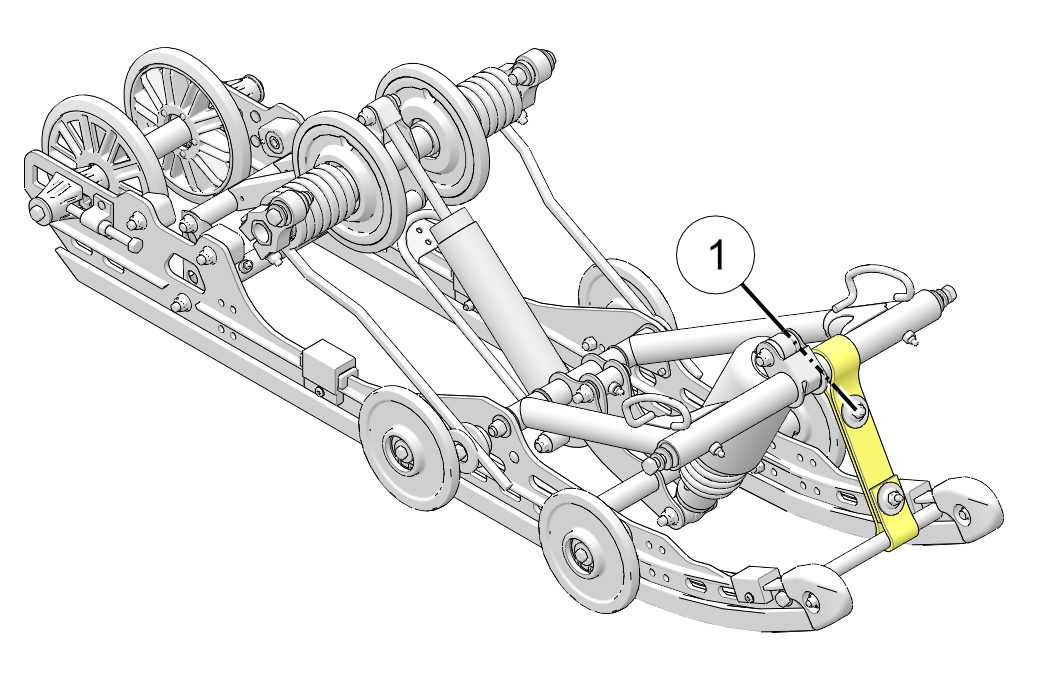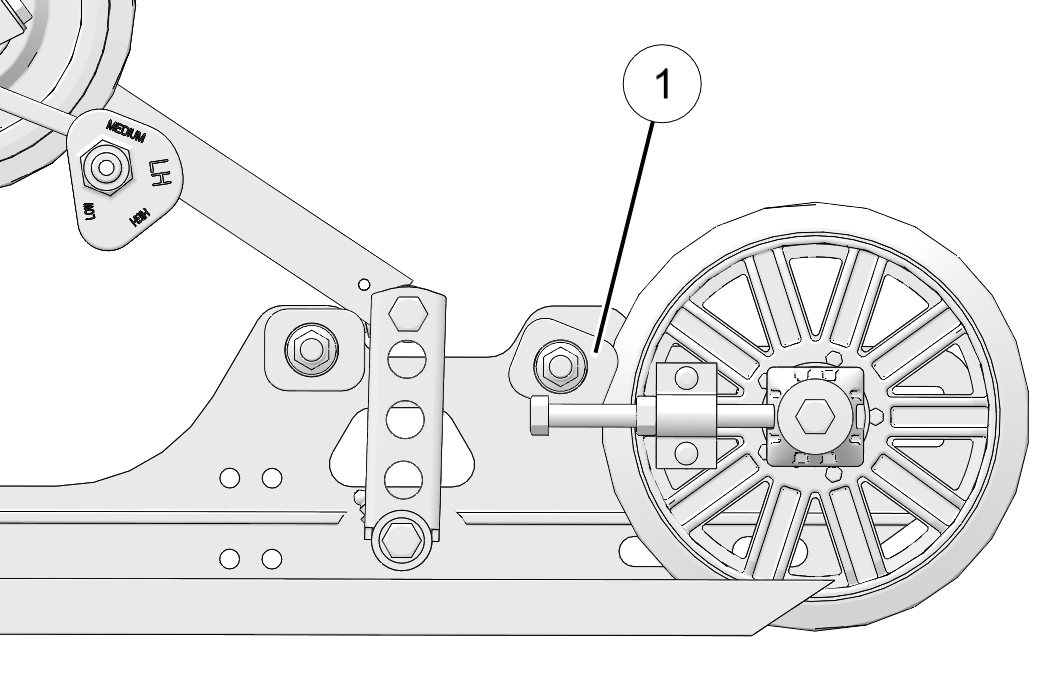Rider weight, riding
style, trail conditions, and vehicle speed all affect suspension action.
Each rear suspension
can be adjusted to suit rider preference and deliver excellent performance
for a given set of conditions.
However, all suspension designs and adjustments involve
a compromise, or trade-off. For example, a suspension set up for snowcross
racing would provide a very stiff ride on the trail.
A suspension set up for trail riding would bottom out harshly on a
snowcross
course.
Refer to the suspension
setup label on your snowmobile, or your POLARIS dealer can provide
the initial suspension setup information.
Additional adjustments can be made after initial setup.
Make adjustments to one area at a time so you can evaluate the change.
For further assistance, your dealer can assist.
Track Tension
Track adjustment
is critical for proper handling. Always maintain correct tension and
alignment. Refer to the track tension
maintenance section of this manual.
Initial Spring Preload
Setting (Sag Method)
To set up the rear
suspension torsion spring preload, measure the distance between the
ground and rear bumper. This is measurement
X.
Take the first
measurement with no rider and with the rear suspension at full extension.
| TIP |
| The rear bumper may need to be lifted upward slightly to fully extend
the suspension. |
Next, have the
rider drop down hard on the seat and bounce up and down several times,
collapsing the rear suspension. With
the rider seated, measure the distance between the
ground and the rear bumper at the exact location used for measurement
X.
This is measurement Y.
To determine sag,
commonly referred to as ride-in, subtract measurement Y from X (sag=X-Y).
If the measured sag is incorrect,
adjust the FRA position and/or rear torsion spring
preload.
| TIP |
| This is only an initial setup, and final spring preload may vary
based on rider preference and riding conditions. Accessory
springs with a higher load
rating are available for some models. Please see your dealer for availability. |
Torsion Spring Preload
To adjust rear
torsion spring preload, rotate the three-position cam using the engine
spark plug tool. Adjustment is easiest
when the cam is rotated from low to medium, and
then to high. Rotating directly from low to high will require significantly
more effort.
Different rate
torsion springs are available if a firmer ride is desired. See your
dealer for more information.
Suspension Coupling
On all POLARIS
snowmobile rear suspensions, there are two torque arms that control
the movement of the rail beam. Prior to
the advent of suspension coupling, these torque
arms could move independently of each other. Rear suspension coupling
links
the movement of the front and rear torque arms to
each other.
There are two types
of rear suspension coupling.
Weight Transfer During
Acceleration
The preferred method
for controlling weight transfer during acceleration is by adjusting
the rear rear scissor stop (RRSS)

. The factory setting
is the best for most trail riding conditions.
To decrease weight
transfer under acceleration (for improved cornering), rotate the RRSS
to a higher position.
To increase weight
transfer or ski lift during acceleration, rotate the RRSS to a lower
position.
| TIP |
| Your dealer can help you with initial setup and additional setup
instructions to help you achieve your optimum ride. A scissor
stop tool is also available
from your dealer. |


